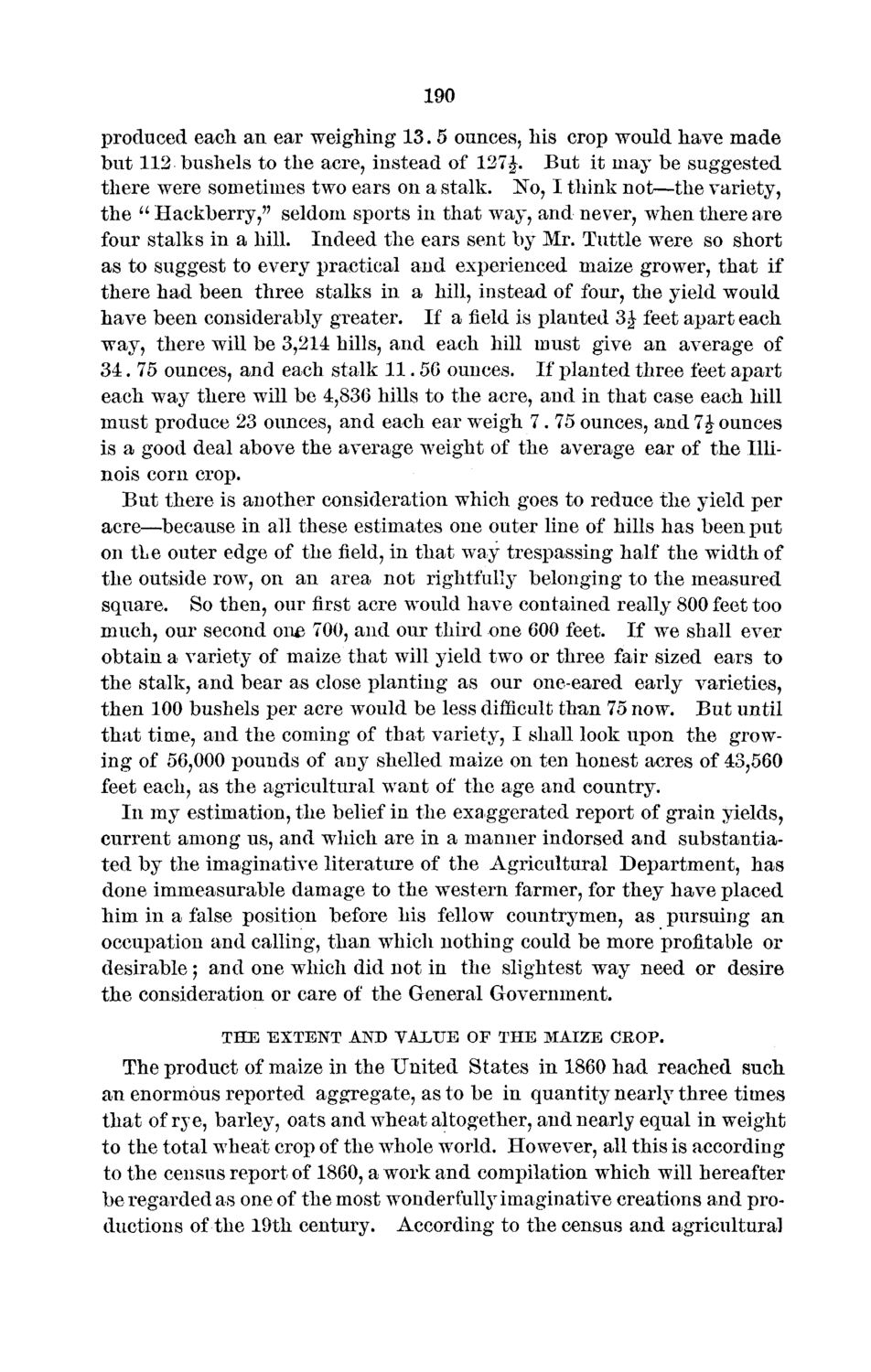| |
| |
Caption: Board of Trustees Minutes - 1872
This is a reduced-resolution page image for fast online browsing.

EXTRACTED TEXT FROM PAGE:
190 produced each an ear weighing 13. 5 ounces, his crop would have made but 112 bushels to the acre, instead of 127£. But it may be suggested there were sometimes two ears on a stalk. No, I think not—the variety, the "Hackberry," seldom sports in that way, and never, when there are four stalks in a hill. Indeed the ears sent by Mr. Tuttle wrere so short as to suggest to every practical and experienced maize grower, that if there had been three stalks in a hill, instead of four, the yield would have been considerably greater. If a field is planted 3 J feet apart each way, there will be 3,211 hills, and each hill must give an average of 34. 75 ounces, and each stalk 11.56 ounces. If planted three feet apart each way there will be 4,836 hills to the acre, and in that case each hill must produce 23 ounces, and each ear w^eigh 7. 75 ounces, and 7 J ounces is a good deal above the average weight of the average ear of the Illinois corn crop. But there is another consideration which goes to reduce the yield per acre—because in all these estimates one outer line of hills has been put on tLe outer edge of the field, in that way trespassing half the width of the outside row, on an area not rightfully belonging to the measured square. So then, our first acre would have contained really 800 feet too much, our second ona 700, and our third one 600 feet. If we shall ever obtain a variety of maize that will yield two or three fair sized ears to the stalk, and bear as close planting as our one-eared early varieties, then 100 bushels per acre would be less difficult than 75 now. But until that time, and the coming of that variety, I shall look upon the growing of 56,000 pounds of any shelled maize on ten honest acres of 43,560 feet each, as the agricultural want of the age and country. In my estimation, the belief in the exaggerated report of grain yields, current among us, and which are in a manner indorsed and substantiated by the imaginative literature of the Agricultural Department, has done immeasurable damage to the western farmer, for they have placed him in a false position before his fellow countrymen, as pursuing an occupation and calling, than which nothing could be more profitable or desirable; and one which did not in the slightest way need or desire the consideration or care of the General Government. THE EXTENT AND VALUE OF THE MAIZE CROP. The product of maize in the United States in 1860 had reached such an enormous reported aggregate, as to be in quantity nearly three times that of rye, barley, oats and wheat altogether, and nearly equal in weight to the total wheat crop of the whole world. However, all this is according to the census report of 1860, a work and compilation which will hereafter be regarded as one of the most wonderfully imaginative creations and productions of the 19th century. According to the census and agricultural
| |